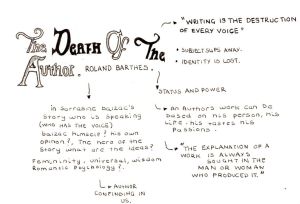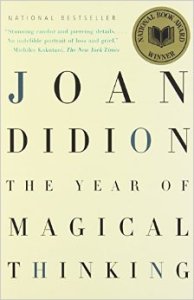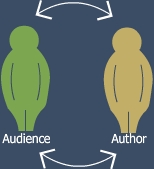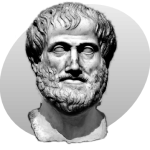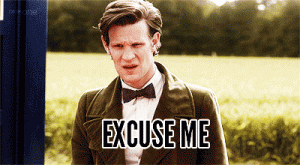When researching rhetorical narrative theory, it seemed at first that most scholarship began with some sort of defense of its efficacy among critics. Narrative theory as a field involves generating knowledge and lending value to literary texts as they intermingle with culture, politics, ethics, and social systems. James Phelan defines the rhetorical methodological approach as,
[S]omebody telling somebody else on some occasion and for some purposes that something happened, and the definition seeks to account for narrative as having a textual dynamics (the telling of something that happened) and a readerly dynamics (the developing responses of the somebody who receives that telling). (“Rhetorical Aesthetics,” 88)
This definition includes the concepts of narrative progression and judgment, which are interested in the “synthesis of textual dynamics and readerly dynamics” because they “directly links textual and readerly dynamics: judgments are communicated by the telling but they are activities of a reader” (89), or as Sheldon Sacks asked, “Do we read the same books?” (qtd. In Phelan Experiencing, ix).

Aside from James Phelan and Dan Shen, few scholars seem to believe that methodologies can live side-by-side in the field.
Now, rhetorical narrative theory lies alongside a range of theoretical lenses[1] that can be applied to the study of literary texts, though its scholars seem to belong a rather narrow field within the broader discipline. Examining the application of rhetorical narrative theory includes not just understanding how it is applied to narrative texts, but also its finer points of study within the field as they continue to be debated, and so, most articles do begin by addressing criticisms. Dan Shen argues that the rhetorical approach “has been shedding significant light on the relation among the implied author, narrator, character, and audience” as it takes its place in narrative theory among other prominent approaches, including feminist, Marxist, formalist, and cognitive (576). And as a major critical theory, one of its most published scholars, James Phelan, argues that, “The rhetorical approach has no a priori commitments to such things as the nature of literary language or the relations between ideology and literature, history and literature, or politics and literature. Indeed, the approach’s only major initial commitment is to the idea that authors design texts as purposive communicative actions” (227). As an object of study within the field itself, the how’s and what’s that question its methods keeps the field fresh and the dialogue lively among its scholars.
The New Criticism, widely adopted throughout the mid-twentieth century, applied a rigorous objectivity to critical theory to literary texts (Yagelski, 300), and New Criticism scholars generally question the legitimacy of critical theory that moves outside “the text itself,” and the instead strive for generating meaning by a close reading of the language, style, and aesthetics of particular texts. Even those scholars who embrace the rhetorical approach to analyzing narrative engage in a vibrant debate of the role and relevancy of the “implied author,” defined as the “author’s second self,” or more fully, “the implied author’s image is one “implied by the text” for readers to infer, an image “the IA wanted them to find,”[2] (Shen “Neo-Aristotelian Criticism,” 583). Though there is much more complexity to the role of the implied author – such as its variable invocations and relationship to the real author, narrator reliability, even a debate about the historical-I of the real author, the narrated-I, the narrating-I, and the ideological-I and the role of the implied author,[3] and the complexity of the depth of analysis when applying rhetorical theory – the debate itself remains an active object of study among rhetorical narrative theorists. Finally, rhetorical narrative theory seems to be combating an ongoing deconstructionalist argument that “seeking to identify an implied author (indeed, the implied author^) of a literary work can surely only appear as a dubious endeavor to reduce the multiplicity of a text’s meanings to the totalizing unity of authorial intention” (Stefanescu 49). Deconstruction is mistrustful of rhetorical theory because it often includes the study of authorial intent, which has raised many criticisms about “intentional fallacy” and whether we can really know intention and whether authorial intention even matters to the reader. Dan Shen attempts to clear up what she terms “decades of misinterpretation” of who the implied author is by offering this definition and clarification: The difference between the “implied author” (second self) and the “real author” (first self) is the difference between the person assuming a certain air or a particular stance when writing the text and the same person in daily life out of the writing process. (“Implied” 142). She further argues that the real author and their historical, cultural, and political contexts, while not primary, enrich the rhetorical study of texts because they “do often exert influence on one’s stance in composing a fictional narrative” and Shen demonstrates this through three studies of a real authors whose historical, biographical, and socio-cultural contexts deepend our understanding of the texts (“Neo-Aristotelian,” 585).
Within rhetorical narrative theory rests the rising influence of affect: the readerly response to texts, the judgments and ethics we apply, and this concept also addresses the question of “Do we read the same books?” Dr. Dana Heller, Chairperson of the Department of English at Old Dominion University, agrees that the understanding the rhetorical effect of certain texts, “[W]ould be appropriate and I think it is appropriate. But I think we need to look just as closely at the rhetorical effect of cultures on texts. This is a two-way street” (“Personal Interview”). Continuing, she points out the growing field of affect study across the disciplines, exemplified in such works as the omnibus reader The Affect Theory Reader (Duke U. Press 2010), which surveys the “enormous body of work” being performed in affective theory (Heller). Understanding how texts work on us as readers and how we can analyze texts by constructing critical approaches that include the concept that “an author…guides us to experience [the text] one way or another” underpins rhetorical narrative theory (Phelan Experiencing, x). As it is applied to texts of any genre, it addresses the question: can we experience, or read, the same texts the same way?
Approaching literature as a point of study for its rhetorical effect allows scholars to be liberated from strictly genre, language, or historical study, and instead blend narrative literature through its affect over time, in its historical period, and for its place among other texts that resonated emotionally in culture. Studying both the texts under scrutiny for its affective nature and the debates within the field of rhetorical theory as they are waged, allows the rhetoric scholar a very broad field of study as well as the opportunity to participate in relevant and important dialogue in critical theory.
****************************
Works Cited
Copland, Sarah. “To Be Continued: The Story of Short Story Theory and Other Narrative Theory.” Narrative 22.1 (Jan.
2014): 132-149. Print.
Heller, Dana. “Personal Interview.” October 3 & 14, 2014. Email.
Phelan, James. Experiencing Fiction: Judgments, Progressions, and the Rhetorical Theory of Narrative. Columbus: Ohio
State University Press, 2007. Print.
——– “The Implied Author, Deficient Narration, and Nonfiction Narrative: Or, What’s Off-Kilter in The Year of Magical Thinking and The Diving Bell and the Butterfly?” Style 45.1 (Spring 2011): 119-137. Print.
Shen, Dan. “Neo-Aristotelian Rhetorical Narrative Study: Need for Integrating Style, Context, and Intertext.” Style 45.4
(Winter 2011): 576-597. Print.
——–“Implied Author, Authorial Audience, and Context: Form and History in Neo-Aristotelian Rhetorical Theory.” Narrative 21.2 (May 2013): 140-158. Print.
Stefanescu, Maria. “Revisiting the Implied Author Yet Again: Why (Still) Bother? Style 45.1 (Spring 2011): 48-66. Print.
Yagelski, Robert P. “English Education.” English Studies: An Introduction to the Discipline(s). Ed. Bruce McComisky.
Urbana: National Council of Teachers of English, 2006. 275-319. Print.
[1] James Phelan notes in his essay “Rhetorical Aesthetics and Other Issues in the Study of Literary Narrative” that these approaches include: formalist, feminist, cognitive, rhetorical, psychoanalytic, Marxist, and others (86). He also discusses the interplay between these approaches and the issues now current in the field of literary narrative: nonmimetic narrative; digital narrative; the fact/fiction distinction; narrative space; and rhetorical aesthetics (86).
[2] See Dan Shen’s article “Neo-Aristotelian Criticism” for a fuller discussion and definition of the “implied author.” See also Wayne C. Booth, The Rhetoric of Fiction (U. of Chicago Press 1983) and James Phelan’s Experiencing Fiction: Judgments, Progressions, and the Rhetorical Theory of Narrative (Ohio State Press 2007).
[3] These are the four autobiographical “I’s” as defined by Sidonie Smith and Julia Watson in Reading Autobiography (2001).

